President Trump announced yesterday, February 16, 2017: “We’re gonna find the leakers. We’re gonna find the leakers. They’re gonna pay a big price for leaking.” Initially, he was talking about the leak that exposed his National Security Advisor, Michael Flynn, as a liar, which forced the president to fire Flynn.
President Trump amplified his thinking at his press conference later in the day, while declaring war on the press. More specifically, Trump was asked: “What will you do on the leaks?” He responded, [W]e’re looking at them very—very, very serious. I’ve gone to all of the folks in charge of the various agencies and we’re—I’ve actually called the Justice Department to look into the leaks. Those are criminal leaks.”
He explained he was referring to not merely the leak of information about General Flynn’s conversations with the Russian ambassador, which had been routinely albeit secretly recorded by American counterintelligence, but President Trump was also upset that his conversations with the President of Mexico and the Prime Minister of Australia had been leaked. He did not mention that he had appeared more buffoon than president in both these conversations which had been leaked, rather he added he was also upset at the potential of his future conversation with North Korea or the Middle East being leaked.
Because Trump knows so little about the American presidency, and even recent history, I have no idea if he is aware that most every president has had to deal with leaks, and many of them have similarly tried to prosecute leakers, with some success. So a brief review of presidential attacks on leaking may be helpful.
Unlike many countries, particularly the United Kingdom, the United States has no “official secrets act,” making it a crime to leak information to the news media or others. But presidents have gotten around this problem by stretching other laws.
In short, Trump’s predecessors have given him several tools with which to go after leakers, despite our First Amendment, although no way to effectively criminally prosecute the news media, which he would probably prefer.
Nixon’s War on Leaks
No president more aggressively went after leakers than Richard Nixon, who was plagued with leaks from the outset of his presidency. Like Trump, he called his Attorney General and said he wanted the leakers uncovered and prosecuted. Accordingly, FBI Director J. Edgar Hoover was tasked with uncovering the culprits, and some seventeen wiretaps were installed on newsmen and Nixon’s own staff at the National Security Council and White House. (Ironically, the Washington Field Office of the FBI was located at the Old Post Office Building, which is now the Trump Hotel on Pennsylvania Avenue, only a few blocks from the White House.)
When Daniel Ellsberg leaked key parts of the so-called “Pentagon Papers” to the New York Times and other news organizations, some 7,000 pages of a comprehensive study of the origins of the war in Vietnam which showed Presidents Truman, Kennedy, and Johnson had dissembled about the war, Nixon first tried to block the leak by enjoining publication of the material, while simultaneously launching a criminal prosecution against ,. (Nixon considered, but the Justice Department discouraged, taking criminal action against the Times and others who published the material because of the First Amendment.)
Because there is no official secrets law, the Justice Department had only a very weak case against Ellsberg, under the Espionage Act of 1917, a law that when passed had expressly included an official secrets type provision, which had been rejected by Congress. The combination of the difficultly of developing a case against Ellsberg, and the FBI’s slow-walking of the investigation because Hoover was allegedly friendly with Ellsberg’s father-in-law, resulted in Nixon creating a Special Investigations Unit in the White House, under the direction of his top domestic policy adviser, John Ehrlichman.
Today we know that Nixon personally instructed this unit—which was dubbed “The Plumbers” because it was charged with searching for and fixing leaks—operated outside the law. Nixon had this unit giving lie-detector tests to suspected leakers, demanding background files on suspects, instructing the CIA to prepare a psychological profile of Ellsberg, and even undertaking break-ins to obtain information about leaks and leakers. As Egil “Bud” Krogh, who ran the unit for Ehrlichman, later wrote (and testified), he understands today these activities were the precursors of Watergate, and indeed, it was these activities that drew the Nixon White House into covering up similar shenanigans at Nixon’s reelection committee, which involved some of the same people. When the work of the Plumbers was revealed during Ellsberg’s criminal trial, the judge ended the prosecution and dismissed the case.
Nixon’s efforts to prosecute Ellsberg under the Espionage Act of 1917 was never tested, given the case was dismissed on other grounds.
Reagan, Bush II, and Obama Create an Unofficial Official Secrets Act
As I have written on other occasions, it was the Reagan administration that effectively employed the Espionage Act to prosecute leaks. In July 1984, Samuel Morrison—the grandson of an eminent naval historian with the same name—leaked three classified photos to Jane’s Defense Weekly. The photos were of the Soviet Union’s first nuclear-powered aircraft carrier, which had been taken by a U.S. spy satellite. Although the photos compromised no national security secrets, and were not given to enemy agents, the Reagan Administration prosecuted the leak to make a point. The case raised the question: Must the leaker have an evil purpose to be prosecuted?
Reagan’s Justice Department argued that the answer was no, rather the leak of classified material alone was enough to trigger imprisonment for up to ten years and fines. The conservative United States Court of Appeals for the Fourth Circuit agreed, holding that such a leak might be prompted by “the most laudable motives, or any motive at all,” and it would still be a crime. Morrison went to jail. Following Morrison’s conviction, the Reagan administration used it to threaten a number of news organizations—e.g., The New York Times, The Washington Post, Time, and —with criminal actions if they published classified information. At best, it stalled a couple of stories. Today, the Espionage Act, though thrice amended since then, continues to criminalize leaks of classified information, regardless of the reason for the leak. In 2001, just before leaving office, President Bill Clinton pardoned Morrison, who had already served his two-year sentence.
The Bush/Cheney administration fashioned an unofficial official secrets act. It was the product of their new attorney general, John Ashcroft, who told Congress he wanted a “comprehensive, coordinated, Government-wide, aggressive, properly resourced, and sustained effort” to deal with “the problem of unauthorized disclosures.” It’s important to note Ashcroft’s words: He said “unauthorized” disclosure—not, say, disclosures of classified information relating to national security, which would be a very different matter. Plainly, he is targeting anyone who leaks information the Bush Administration would rather not have made public—even when security is in no way at risk.
But Ashcroft did not get what he wanted. Rather than pushing for new legislation that might spark an uproar with the news media, he twisted and distorted laws already on the books to create the equivalent of such conduct. He used laws that were never intended to criminally prosecute leaking to threaten leakers, and by cobbling together provisions from existing laws, Bush’s Justice Department effectively created one of the world’s most encompassing, if not draconian, official secrets prohibitions. Fortunately, it was little used, and there were few prosecutions for leaks by the Bush/Cheney Justice Department.
Surprisingly, it was President Obama who went after leakers with more zeal than all his predecessors, using the Espionage Act. Here is his record, which shows the proficiency of the Justice Department in prosecuting leakers:
- 2009: Obama prosecuted Shamai Leibowitz;
- 2010: Obama prosecuted Stephen J. Kim, Thomas Drake, Chelsea Manning (who Obama pardoned in 2017), and Jeffrey Sterling, although it should be noted that the Drake and Sterling investigations began during the administration of George W. Bush;
- 2012: Obama prosecuted James Hitselberger and John Kiriakou;
- 2013: Obama prosecuted Donald Sachtleben; and
- 2014: Obama prosecuted Stephen Jin-Woo Kim and began investigating Julian Assange and Edward Snowden, both men who are currently evading arrests by the United States.
In short, if the FBI can find the leakers there are no shortage of tools which, to use President Trump’s words, can be employed to make them “pay a big price for leaking.” But I know of no president who has ever solved the problems of leaks, particularly when large numbers of federal employees disagree with that president, which is the situation Trump faces.







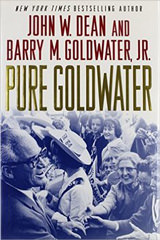
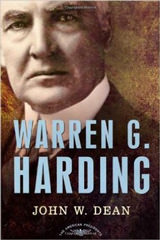
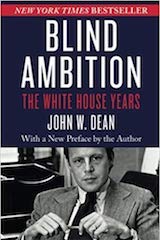
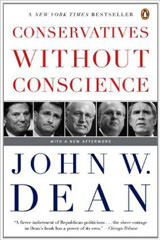
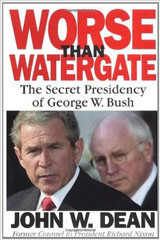
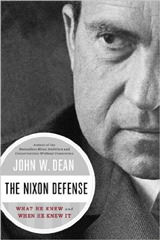
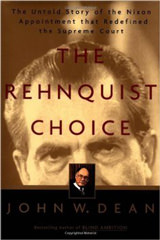
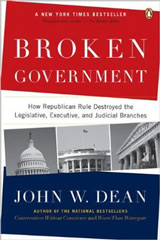
The Flynn case has one important variance, FISA and the rules on wiretapping Americans. The real problem with leaks is that they rarely have all the facts and a friendly or hostile press creates a whole story from one little kernel of truth. This does bring an interesting light to the whole Snowden matter.
Trump knows so little that he might not even recognize John Dean as a convicted felon.
Yes, one proven to have been on the right side of history.
I see that your hatred for democracy goes way back.
Just let agency officials know that they will be fired with, negative summaries of employment, if it is found that they have been unsuccessful in stopping leaks and maintaining security within their workforce. Follow through is important!